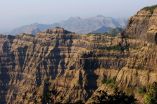(Press-News.org) The majority of RNA expression differences between individuals have no connection to the abundance of a corresponding protein, report scientists from the University of Chicago and Stanford University in Science on Dec. 18. The findings point to a yet-unidentified cellular mechanism that regulates gene expression and suggest studies that rely only on RNA measurements to characterize gene function require further analysis.
"The chief assumption for studies of RNA differences is that they ultimately reflect differences in an end product, which is protein," said senior study author Yoav Gilad, PhD, professor of human genetics at the University of Chicago. "But it turns out in most cases this may not be true."
For a gene to be expressed, information in DNA is copied onto messenger RNA (mRNA), which are the direct templates used to create proteins - the structural components and molecular machines for almost every function in a cell. Differences in mRNA levels between individuals are thought to affect how much protein is produced from a gene, and therefore reflect gene expression. However, this relationship has never been fully described.
Gilad and Jonathan Pritchard, PhD, professor of genetics and biology at Stanford University, together with their colleagues, mapped regulatory quantitative trait loci (QTL) - genomic regions linked to differences between individuals in regulatory traits such as gene expression. They compared QTLs for mRNA and protein expression levels for more than 4,000 genes.
The team confirmed variation in QTLs led to different levels of mRNA for a large number of genes. Yet, only one-third showed an accompanying change in protein levels. The majority of QTLs that affected mRNA levels did not have any effect on the amount of corresponding protein.
To search for a potential mechanism for this phenomenon, the team looked at whether QTLs affected the rate at which ribosomes, the cellular machines responsible for creating proteins, functioned. They found QTL variation caused changes to ribosome function similar to mRNA levels, but the majority still did not affect protein abundance. Gilad and his colleagues hypothesize a yet-unidentified buffering mechanism prevents dramatic shifts in protein levels when mRNA levels and ribosome function are in flux.
"Our observations point to a previously under-appreciated property of gene regulation, namely widespread buffering of protein levels so that a cell can sustain some amount of RNA variation without it affecting proteins," Gilad said. "This appears to be a common phenomenon and motivates us to look for the mechanisms that can account for it."
Their findings also suggest many existing studies might require additional scrutiny, since mRNA-linked QTLs have been frequently used to identify genes and attribute them to complex diseases, from cancer to diabetes.
"This underscores the importance of being cautious," Gilad said. "We need to make sure that genes we think are important for disease or that give us insight into biology are linked to protein products and not just RNA."
INFORMATION:
The study, "Impact of Regulatory Variation from RNA to Protein," was supported by the National Institutes of Health and the Howard Hughes Medical Institute. Additional authors include Alexis Battle, Zia Khan, Sidney Wang, Amy Mitrano and Michael Ford.
HANOVER, N.H. - Human cells are protected by a largely impenetrable molecular membrane, but researchers have built the first artificial transporter protein that carries individual atoms across membranes, opening the possibility of engineering a new class of smart molecules with applications in fields as wide ranging as nanotechnology and medicine.
The study, which appears Friday, Dec. 19, in the journal Science, is a milestone in designing and understanding membrane proteins. A PDF is available upon request. The study was conducted by researchers from Dartmouth College, ...
A study of the way malaria parasites behave when they live in human red blood cells has revealed that they can rapidly change the proteins on the surface of their host cells during the course of a single infection in order to hide from the immune system.
The findings, which overturn previous thinking about the Plasmodium falciparum parasite's lifecycle, could explain why so many attempts to create an effective vaccine have failed and how the parasites are able to survive in the human body for such long periods of time.
In the study, Plasmodium falciparum parasites were ...
Scientists and engineers have built a computer model that has uncovered disease-causing mutations in large regions of the genome that previously could not be explored. Their method seeks out mutations that cause changes in 'gene splicing,' and has revealed unexpected genetic determinants of autism, colon cancer and spinal muscular atrophy.
CIFAR Senior Fellow Brendan Frey (University of Toronto) is the lead author on a paper describing this work, which appears in the Dec. 18 edition of Science Express. The paper was co-authored by CIFAR senior fellows Timothy Hughes (University ...
The evolution of trichromatic color vision in humans occurred by first switching from the ability to detect UV light to blue light (between 80-30 MYA) and then by adding green-sensitivity (between 45-30 MYA) to the preexisting red-sensitivity in the vertebrate ancestor. The detailed molecular and functional changes of the human color vision have been revealed by Shozo Yokoyama et al. Emory University and is published in the journal PLOS Genetics.
The molecular basis of functional differentiation is a fundamental question in biology. To fully appreciate how these changes ...
CAMBRIDGE, MA -- For decades, neuroscientists have been trying to design computer networks that can mimic visual skills such as recognizing objects, which the human brain does very accurately and quickly.
Until now, no computer model has been able to match the primate brain at visual object recognition during a brief glance. However, a new study from MIT neuroscientists has found that one of the latest generation of these so-called "deep neural networks" matches the primate brain.
Because these networks are based on neuroscientists' current understanding of how the ...
A University of Southampton researcher has helped solve a long standing space mystery - the origin of the 'theta aurora'.
Auroras are the most visible manifestation of the Sun's effect on Earth. They are seen as colourful displays in the night sky, known as the Northern or Southern Lights. They are caused by the solar wind, a stream of plasma - electrically charged atomic particles - carrying its own magnetic field, interacting with the earth's magnetic field.
Normally, the main region for this impressive display is the 'auroral oval', which lies at around 65-70 degrees ...
PROVIDENCE, R.I. - Where you live affects the type of bacteria that cause bloodstream infections, according to researchers at Rhode Island Hospital and an international team of investigators. The closer you live to the equator, the greater the likelihood of a bloodstream infection caused by a group of bacteria called Gram-negative bacteria, which thrive in warm and moist environments, compared to another group of bacteria referred to as Gram-positive bacteria. The study also found that the proportion of a country's GDP spent on health care impacted the type of bacteria ...
DALLAS - Dec. 18, 2014 - Retroviruses are best known for causing contagious scourges such as AIDS, or more sporadically, cancer.
But researchers at UT Southwestern Medical Center and Karolinska Institutet in Stockholm, Sweden, found that endogenous retroviruses (ERV) also play a critical role in the body's immune defense against common bacterial and viral pathogens.
"Most scientists have become used to the view that retroviruses are generally harmful," said Nobel Laureate Dr. Bruce Beutler, Professor and Director of UT Southwestern's Center for the Genetics of Host ...
Primates visually recognise and determine the category of an object even at a brief glance, and to date, this behaviour has been unmatched by artificial systems. A study publishing this week in PLOS Computational Biology has found that the latest artificial "deep neural network" performs as well as the primate brain at object recognition.
Charles Cadieu and colleagues from MIT measured the brain's object recognition ability by implanting arrays of electrodes in the inferior temporal cortex of macaques. This allowed the researchers to see the neural representation -- the ...
A definitive geological timeline shows that a series of massive volcanic explosions 66 million years ago spewed enormous amounts of climate-altering gases into the atmosphere immediately before and during the extinction event that claimed Earth's non-avian dinosaurs, according to new research from Princeton University.
A primeval volcanic range in western India known as the Deccan Traps, which were once three times larger than France, began its main phase of eruptions roughly 250,000 years before the Cretaceous-Paleogene, or K-Pg, extinction event, the researchers report ...


